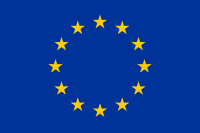Copyright Office Hours
Community Room
Changes at "Unable to identify or contact rightsholders"
Description (English)
-
-
How can I use copyright-protected works if I cannot contact the rightsholder?
The default rule is that anyone wishing to use a work protected by copyright should obtain permission of the copyright owner to do so. This can be done by obtaining a license through which the rightsholder gives permission only for certain uses of his work while still enjoying copyright ownership. Another way to obtain the rights is by way of assignment, where the copyright holder transfers the entire copyright or only certain exclusive rights copyright grants to someone else. However, obtaining permission from the rightsholder may not always be possible.
For certain uses, one might not always need the permission of the copyright holder, and EU copyright law provides various opportunities for this.
To start with, using a trivial or insignificant part of a copyrighted work (“de minimis use”) might be possible without the need to obtain the permission of the rightsholder. Also, copyright law limits the exclusive rights of the rightsholder by allowing third parties to use the work for certain acts without permission, like for review or criticism, teaching and research or for preservation of cultural heritage. Moreover, a copyrighted work might be used without obtaining permission if it is made available under an open license. When this is the case, the user knows in advance that certain uses of the copyrighted work are already allowed by the rightsholder. This is mainly the case with Creative Commons Licenses.
-
+
How can I use copyright-protected works if I cannot contact the rightsholder?
The default rule is that anyone wishing to use a work protected by copyright should obtain permission of the copyright owner to do so. This can be done by obtaining a license through which the rightsholder gives permission only for certain uses of his work while still enjoying copyright ownership. Another way to obtain the rights is by way of assignment, where the copyright holder transfers the entire copyright or only certain exclusive rights copyright grants to someone else. However, obtaining permission from the rightsholder may not always be possible.
For certain uses, one might not always need the permission of the copyright holder, and EU copyright law provides various opportunities for this.
To start with, using a trivial or insignificant part of a copyrighted work (“de minimis use”) might be possible without the need to obtain the permission of the rightsholder. Also, copyright law limits the exclusive rights of the rightsholder by allowing third parties to use the work for certain acts without permission, like for review or criticism, teaching and research or for preservation of cultural heritage. Moreover, a copyrighted work might be used without obtaining permission if it is made available under an open license. When this is the case, the user knows in advance that certain uses of the copyrighted work are already allowed by the rightsholder. This is mainly the case with Creative Commons Licenses.
Instructions to participate (English)
-
-
By clicking on "participate", you can add further questions, thoughts, answers or comments on this topic that will be moderated by inDICEs project partners and visible to other participants in this space.
-
+
By adding a comment in the section below, you can add further questions, thoughts, answers or comments on this topic that will be moderated by inDICEs project partners and visible to other participants in this space.




